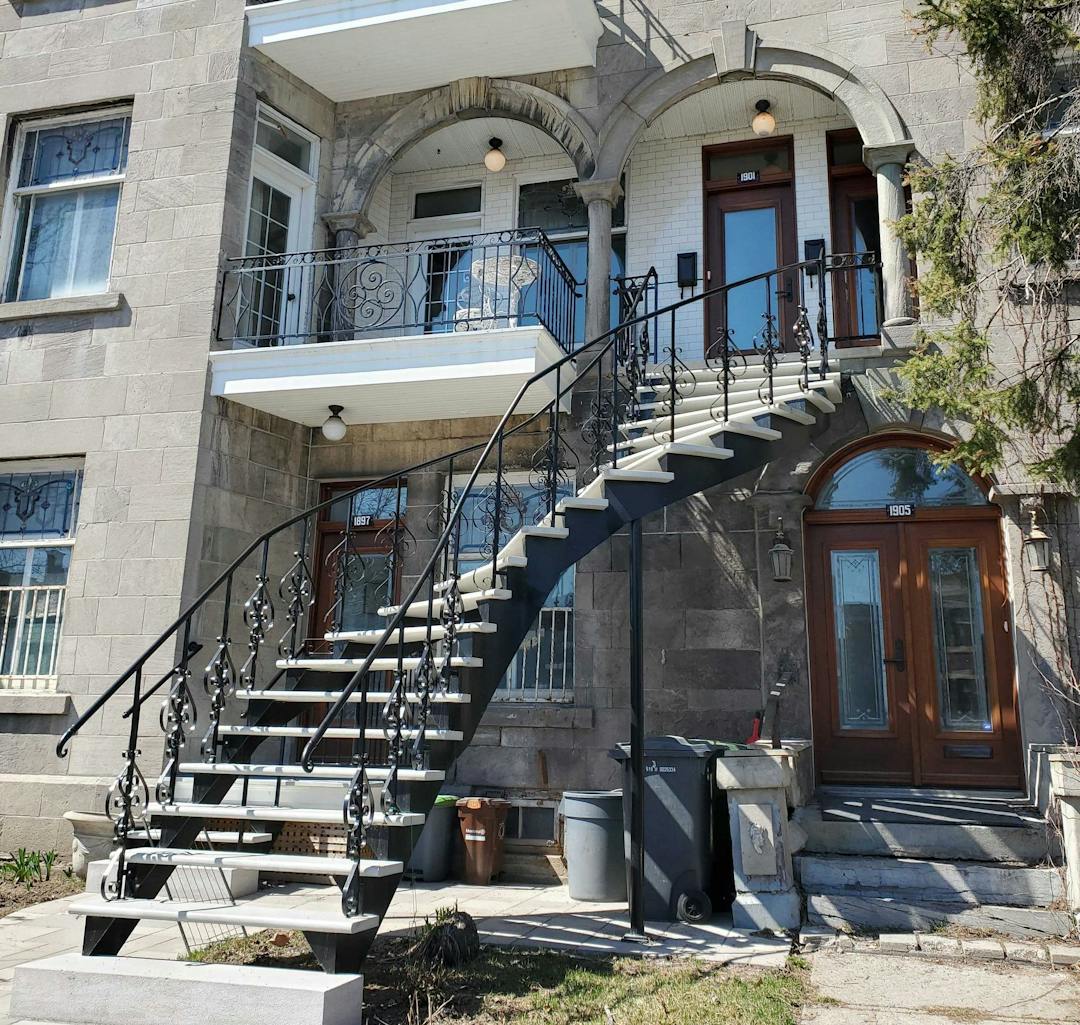The Fascinating History of Montreal's Spiral Staircases
This history lesson explores how Montreal's exterior spiral staircases came to be and how they came to be one of Montreal’s most iconic symbols.

In a city that can accumulate up to six feet of snow in winter—not to mention the threat of major ice storms every generation or so—visitors to Montreal often wonder why our plexes (residential buildings with individual units stacked on top of another) have exterior spiral staircases, particularly in neighbourhoods like the Plateau, Rosemont, Villeray, Hochelaga, and others. That left us wondering: Do locals know the reason?
It does seem kind of preposterous to think that in a city where a significant portion of its population is made up of renters, this means the annual ritual of Moving Day on July 1st can get pretty complicated navigating up and down those stairs—especially when you factor in things like fridges, stoves, and washing machines. So where did they come from?


Montreal’s plexes started appearing in the mid-19th century and typically housed large, working-class families. The city’s population was growing rapidly by the late 19th and early 20th century, leading to a housing boom that saw the development of many multiplexes starting in the 1870s.
Around the same time, Montreal began enforcing zoning regulations, requiring that new residential buildings be set back to accommodate for a small green space in front (in what may have been influenced by the City Beautiful Movement), as well as further back from the street to prevent falling snow from harming passing pedestrians. This indirectly encouraged builders to put staircases outside as a space-saving measure. This also allowed landlords, who typically occupied a plex’s larger ground-floor unit and rented up its upper spaces, to save money on heating.
Outside staircases everywhere. Winding ones, wooden ones, rusty and risky ones. – Mordechai Richler, The Apprenticeship of Duddy Kravitz (1959)
Seemed like a win-win for everyone. With limited exterior space, builders got creative, leading to contortions in the staircases to allow people to enter the building from upper levels. The earliest examples were crafted out of cast iron and wood, and some were highly ornate in detail.

Another theory exists which insinuates the Roman Catholic Church may have something to do with it. With staircases exposed, there would be no opportunities for people to sneak around without the neighbours seeing. Having neighbours interact in a more public way—on the staircases or on their balconies—would be a way to ensure there wasn't anything going on out of sight. Interesting, though no proof exists for what was essentially a morality check at a time where the church held firm authority over the Quebecois population.
To many of us, the spiral staircases may be one of the most iconic symbols of Montreal—but that wasn’t always the case. As iron staircases began sprouting up across Montreal’s working-class neighborhoods, the city’s elite considered them not just a nuisance, but an eyesore. The city prohibited its addition on any new construction in the 1940s, labeling them an inherent safety risk during the city’s harsh winters.
However, these staircases eventually became an essential—and permanent—part of Montreal’s urban landscape. By the 1970s, the city reauthorized them, and newer plexes were permitted to incorporate exterior staircases according to updated building codes. Since then, photographs, paintings, and postcards have all showcased this unique, architectural characteristic of our city, enticing curious visitors to wonder—why are they there in the first place?

Well, now you know. And, really, who knew these staircases carried such an impressive history?
![The Bulletin: Forest fires rage on, housing crises continue, and more [Issue #31]](/_next/image?url=https%3A%2F%2Fthemain.ghost.io%2Fcontent%2Fimages%2F2023%2F06%2F356065186_155920034160862_7035822160075988288_n.jpg&w=640&q=75)





